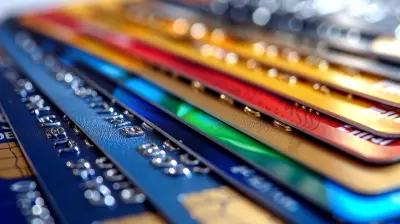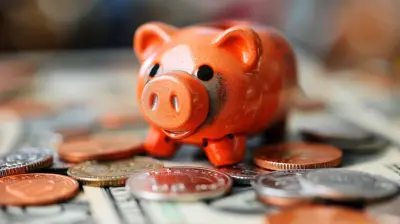The Role of Minimalism in Accelerating Your Savings Goals
1 November 2025
Let’s get real — saving money can feel like an uphill battle. You cut coupons, skip lattes, maybe even cancel that one random streaming service, but somehow… your savings still don’t grow as fast as you’d like. Sound familiar?
Now, what if I told you there’s a mindset shift — not just a budget tweak — that could change the whole game?
Yep, it’s called minimalism. And no, it’s not just about white walls, capsule wardrobes, or living out of a tiny house with two forks and three shirts. At its core, minimalism is about intentional living — owning less, spending less, and focusing more on what truly adds value to your life.
And guess what? That mindset can light a fire under your savings goals like nothing else.
In this article, we’ll dive into how minimalism works its magic on your finances, how to start embracing it without feeling deprived, and, most importantly, how it can fast-track your journey to financial freedom.
What is Minimalism, Really?
When most people hear “minimalism,” they think of stark living rooms with one lonely chair. But let’s not get lost in the aesthetics.Minimalism is about simplifying your life by cutting out the excess — the stuff, commitments, and habits that don’t serve you. It’s about being more intentional with your time, energy, and yes, your money.
Instead of chasing the next thing — the upgrade, the sale, the lifestyle creep — minimalism asks: _Do I really need this?_ Will this bring lasting joy or just a quick dopamine hit?
Once you start thinking like that, something amazing happens: you spend less without even trying. And when you spend less, you save more.
Boom. That’s the magic.
How Minimalism Helps You Save Faster
Let’s break it down. Here’s exactly how minimalism becomes a superpower for your bank account.1. You Buy Less Stuff
Obvious, but powerful.Minimalism helps you question every purchase. Instead of mindlessly tossing things into your cart (or hitting “Buy Now" at 1 AM), you pause. You ask: “Do I really need this?” And more often than not, the answer leans toward _nope_.
Fewer impulse buys = more money saved.
2. You Break Free From Lifestyle Inflation
Ever get a raise and feel like it disappeared overnight? That’s lifestyle inflation — when your spending rises with your income.Minimalists fight that urge. Instead of upgrading your car, home, clothes, and gadgets every time your income increases, you stick to the essentials and funnel the extra cash into savings or investments.
That’s how you build wealth quietly.
3. You Focus on Value, Not Price
Minimalism isn’t about being cheap — it’s about being intentional.You stop buying five pairs of cheap jeans that fall apart and invest in one high-quality pair that lasts. That swap may cost more upfront but saves you money long-term. The same goes for electronics, kitchen tools, and even subscription services.
When you look at purchases through the lens of longevity and value, your money goes further.
4. You Reduce Mental Clutter (Which Leads to Better Decisions)
Ever notice how decision fatigue leads to bad choices — like ordering expensive takeout when your fridge is full?Minimalism simplifies your physical and mental space. Fewer distractions, less stress, and more clarity. That means better financial decisions — not just at the checkout, but across the board.
Real Examples of How Minimalism Can Accelerate Your Savings
Let’s make this tangible. Check out how minimalist choices can help stack your savings fast.☕ Daily Coffee Shop Trips vs. Home Brewing
- Coffee shop habit: $5/day = $150/month- Home brewing: $0.50/day = $15/month
That’s a $135 difference every single month — or $1,620 a year. Multiply that across multiple habits and boom, your savings skyrocket.
👗 A Packed Closet vs. a Capsule Wardrobe
- Buying new clothes monthly: $200- One-time seasonal capsule: $500/year
Minimalism encourages you to curate your wardrobe, not constantly expand it. By investing in a few versatile, high-quality essentials, you spend way less over time.
🏠 Extra Living Space vs. Living Within Your Means
Renting a 3-bedroom when you only need 1 or 2? That’s hundreds (or even thousands) each month going to unused space.Minimalism often leads people to right-size their homes — and the savings are wild.
But Won’t Minimalism Make Life Boring?
Honestly? Not at all.Minimalism isn’t about deprivation — it’s about freedom. When you’re not constantly buying stuff or paying off debt, you get time, space, and peace of mind back.
You start spending money on what actually matters: experiences, travel, hobbies, relationships.
Plus, you realize you don’t need all the clutter to be happy. Less truly becomes more.
How to Start Living Minimally Today (Without Going Full Monk)
You don’t need to go cold turkey with everything you own. Minimalism isn’t all or nothing.Here’s how to dip your toes in and start accelerating your savings today.
1. Do a “Stuff Audit”
Pick one area of your life — your closet, your kitchen, your garage — and start decluttering. Ask yourself:- When was the last time I used this?
- Does this item add real value to my life?
- Would I buy this again today?
Sell, donate, or toss what you don’t need. Bonus: selling stuff can give your savings a quick early boost.
2. Unsubscribe & Unfollow
Marketing is sneaky. The more ads and influencer content you see, the more likely you are to spend.Unsubscribe from promotional emails and unfollow accounts that make you feel like you need to buy stuff to keep up. Out of sight, out of mind — and out of your wallet.
3. Set a “One-In, One-Out” Rule
Before bringing in something new, commit to getting rid of something you already own. This keeps your space tidy and naturally limits impulse spending.Want a new pair of shoes? Cool — donate or sell a pair you rarely wear.
4. Reframe “Fun” Spending
Minimalism doesn’t mean you can’t have fun — it just asks you to redefine it.Instead of dinner at a $70-per-plate restaurant every weekend, try a potluck with friends. Swap shopping sprees for hikes, game nights, or DIY craft sessions.
You’ll spend less without sacrificing connection or enjoyment.
Minimalism in a Relationship or Family? Yes, Please.
Minimalism doesn’t have to be a solo journey — and involving your partner or kids can make it even more effective.Talk openly about goals. Set spending limits together. Declutter as a family. Teach your kids that stuff isn’t what brings happiness.
When the whole household is on board, your progress toward those savings goals can go from a crawl to a sprint.
Turning Minimalism Into a Long-Term Financial Strategy
So, you’ve adopted some minimalist habits and have extra cash at the end of each month. Now what?Don’t let it just sit there. Use that money to supercharge your financial goals:
- Build an emergency fund
- Crush high-interest debt
- Max out your retirement accounts
- Save for a mortgage down payment
- Invest for long-term wealth
Minimalism is the spark. But how you use the fuel makes all the difference.
Final Thoughts: Is Minimalism Worth It?
If your savings goals feel stuck in neutral, minimalism might just be the push you need.It’s not about living with nothing. It’s about living with enough — and realizing that enough can be incredibly freeing.
Minimalism helps you spend less, stress less, and save more — all while creating a life that’s more meaningful, not less.
So, what do you say?
Ready to stop chasing stuff and start chasing freedom?
all images in this post were generated using AI tools
Category:
Savings GoalsAuthor:

Angelica Montgomery
Discussion
rate this article
1 comments
Briar McGeehan
Minimalism streamlines expenses, enhancing savings efficiency and focus.
November 5, 2025 at 3:50 AM


